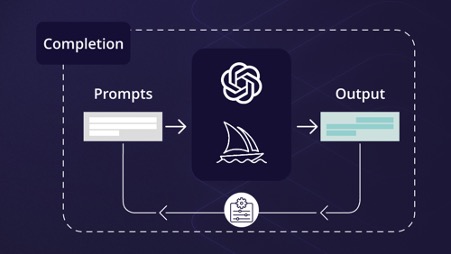Introduction
In an era characterised by rapid advancements and groundbreaking innovations, the concept of prompt engineering stands at the forefront, holding the potential to redefine the future. Prompt engineering encapsulates the ethos of swiftly addressing challenges and opportunities through agile, efficient, and forward-thinking methodologies. It is a paradigm that thrives on immediacy, adaptability, and precision in creating solutions that cater to the evolving needs of society.
At its core, prompt engineering embodies a mindset shift that urges engineers and innovators to embrace agility and responsiveness in their approach. Traditionally, engineering processes followed a linear trajectory, with meticulous planning and extended development cycles. However, the contemporary landscape demands a departure from this conventional methodology. The demand for instant solutions, dynamic problem-solving, and the need to adapt to rapidly changing circumstances has given rise to prompt engineering.

Evolution of Prompt Engineering
In the swiftly advancing realm of artificial intelligence, prompt engineering stands out as a pivotal technique for refining and optimizing AI models. This practice guides the outputs of these models, paving the way for responses that are not only accurate but also contextually appropriate. In this blog, we will explore the captivating history of prompt engineering, tracing its evolution and assessing its profound impact on the AI landscape.
Early Days: Rule-Based Systems
In the initial stages of AI, rule-based systems held sway. These systems operated on predefined rule sets to generate responses, effective for simpler tasks but lacking when faced with complex language understanding. In its embryonic stage, prompt engineering involved meticulously crafting these rule sets to extract desired responses from the AI system.
Machine Learning Revolution
With the advent of machine learning, AI models evolved to learn patterns and make predictions from extensive datasets. However, early versions of these models struggled with coherence and context. Prompt engineering gained traction as researchers and developers recognized the need to guide these models through well-crafted prompts.
Transformer Models and Fine-Tuning
The introduction of transformer models, exemplified by GPT (Generative Pre-trained Transformer), marked a significant breakthrough in natural language processing. These models showcased exceptional language generation capabilities, thrusting prompt engineering into the spotlight. Developers began realizing the potential to fine-tune these models on specific tasks or datasets.
Iterative Refinement and Feedback Loops
Prompt engineering has now evolved into an iterative process, marked by constant refinement and feedback loops. Developers experiment with diverse prompt strategies, adjusting instructions, examples, and constraints to optimize model outputs. This iterative approach empowers prompt engineers to tailor AI models for specific use cases, ensuring responses that are both accurate and reliable.
Contextual Prompts and Active Learning
Recent strides in prompt engineering include the exploration of contextual prompts. By incorporating context-aware instructions or system/user messages, prompt engineers can steer conversations and generate more contextually appropriate responses. Active learning techniques are also being leveraged, allowing models to iteratively improve prompt engineering by learning from user feedback and adapting accordingly.
What makes prompt engineering crucial?
The significance of prompt engineering has surged with the advent of generative AI, leading to a substantial rise in prompt engineering jobs. These professionals act as intermediaries between end users and expansive language models, identifying scripts and templates that users can customize for optimal results. By experimenting with various inputs, prompt engineers curate a library of prompts, enabling application developers to apply them across diverse scenarios.
Prompt engineering plays a pivotal role in enhancing the efficiency and efficacy of AI applications. Typically, application developers encapsulate open-ended user input within a prompt before submitting it to the AI model.
Take, for instance, AI chatbots. When a user enters a partial problem statement like “Where to purchase a shirt,” the application’s code internally uses an engineered prompt that sets the context: “You are a sales assistant for a clothing company. A user in Alabama, United States, is inquiring about where to purchase a shirt. Provide information on the three nearest store locations stocking shirts.” Subsequently, the chatbot generates more pertinent and accurate responses.

Some of the benefits of prompt engineering include the following:
Greater Developer Control:
Prompt engineering affords developers enhanced control over user interactions with AI. Effective prompts convey intent, establish context for large language models, refine output, and present information in the required format. They also prevent users from misusing or requesting information beyond the AI’s capabilities, ensuring responsible usage, especially in business applications.
Improved User Experience:
Users benefit from coherent, accurate, and relevant responses without resorting to trial and error. Prompt engineering streamlines the process, allowing users to obtain pertinent results in the initial prompt. Additionally, it helps mitigate biases present in the training data of large language models, offering a more equitable and refined user experience.
Increased Flexibility:
Higher levels of abstraction in prompt engineering empower AI models and enable organizations to create flexible tools at scale. Prompt engineers can craft domain-neutral instructions, emphasizing logical links and broad patterns. This facilitates the rapid reuse of prompts across the enterprise, expanding the scope of AI investments.
Thus, we can say prompt engineering emerges as a linchpin in the seamless integration of AI into applications, providing control, enhancing user experiences, and fostering flexibility in the rapidly evolving landscape of artificial intelligence.

Future Trends: The Next Frontier of Prompt Engineering
The potential of prompt engineering in the future is vast. With the widespread integration of AI systems into diverse facets of our daily lives, the importance of refining their responses through prompt engineering is set to grow significantly. This method not only enhances the efficiency of AI models but also cultivates a harmonious relationship between humans and machines.
Having traversed the historical context and the present landscape of prompt engineering, it becomes evident that this field is anything but static—it is in a perpetual state of evolution. Fuelled by progress in machine learning, computational capabilities, and interdisciplinary research, the forthcoming trajectory of prompt engineering promises exhilarating possibilities. Let’s delve into these emerging trends poised to reshape our interactions with conversational AI and other machine learning models.
Conclusion
In summary, prompt engineering emerges as a transformative force in the realm of artificial intelligence. Its potential introduces novel opportunities for customization, effective problem-solving, and the ethical development of AI. As we delve deeper into harnessing the complete capabilities of prompt engineering, we stand at the threshold of a groundbreaking era in human-AI interaction, characterized by unparalleled levels of sophistication in collaboration between humans and intelligent systems.
As we cast our gaze into the future, it’s crucial to recognize that many of these emerging trends are already taking form. Pioneering companies and research institutions are pushing the limits, transforming what might appear as a future trend today into a commonplace practice tomorrow.
By gaining insight into these upcoming trends, we position ourselves to navigate a world where prompt engineering assumes an even more pivotal role in shaping our interactions with technology. The next phase of prompt engineering transcends mere academic or technical challenges; it represents a pathway to foster more intuitive, ethical, and efficient collaborations between humans and machines. As we find ourselves on the brink of this exhilarating future, the question isn’t just about what it holds, but how we will actively shape it to better cater to our diverse and evolving needs.
Nevertheless, along with tremendous potential comes the imperative for conscientious practices. Ethical considerations, sustainability, and the repercussions on society and the environment must persist as central tenets in prompt engineering initiatives. Striking a balance between expediency and ethical-social responsibility ensures that groundbreaking innovations not only benefit the common good but also uphold long-term sustainability.
In summary, the outlook for prompt engineering signals a new era of innovation, characterized by agility, collaboration, and technological prowess. Embracing this paradigm shift holds the potential to swiftly address global challenges, foster inclusive development, and bring about a future where engineering marvels seamlessly transition from the realm of imagination to tangible reality. As we navigate the intricacies of the future, the principles of prompt engineering are destined to play a pivotal role in shaping a more luminous and responsive world.
Written by – Aarushi Dadhich
Edited by – Mehansh Barthwal
